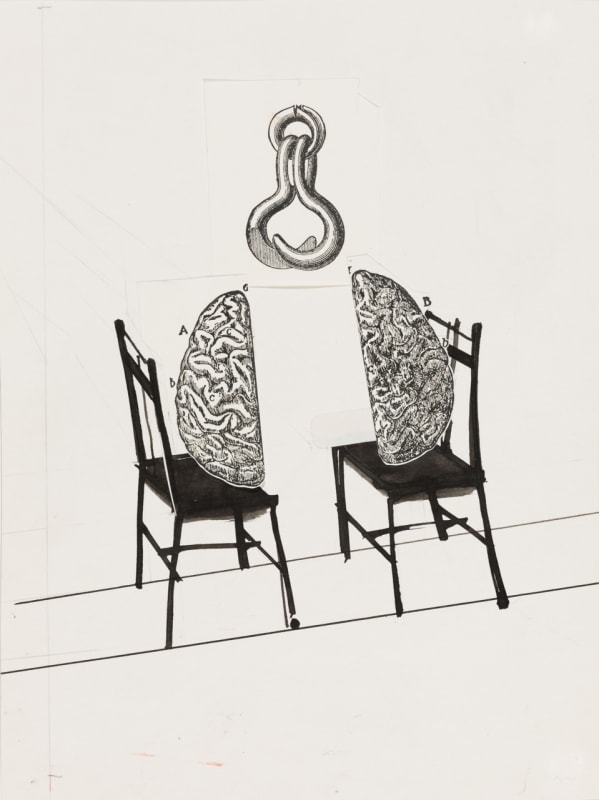Paul Kotula Projects is very excited to present Paul Schwarz: A Shadow is Never Still. Presented in two parts -- Chapter One: 4:55 and Chapter Two: 7:00, the exhibition celebrates the life and work of Detroit artist Paul Schwarz (1946-1998), a younger member of the Case Corridor group whose unbridled and inventive work transformed the visual arts in Detroit in the 1970s.
The title of each part of Paul Schwarz: A Shadow is Never Still references an undated mixed media drawing in which the artist captures the transformation of a mountain through the movement of the sun. The record began at 4:55 and ended at 7:00. Each title also represents his passion for the literary arts.
The title of each part of Paul Schwarz: A Shadow is Never Still references an undated mixed media drawing in which the artist captures the transformation of a mountain through the movement of the sun. The record began at 4:55 and ended at 7:00. Each title also represents his passion for the literary arts.
Chapter One: 4:55 will include a selection of the artist's collage/painting hybrids, sculpture and works on paper (including many sketches never exhibited before); a selection of the artist's dairies, collected imagery, and the artist's writings; and archives on the artist's work. The installation is designed to give the public a heightened understanding of the psychological and philosophical underpinnings of the artist's highly intellectual and emotive work. A reception for part one of Paul Schwarz: A Shadow is Never Still will be held Thursday, June 22 from 6:30 to 9 PM. Dates for Chapter Two: 7:00 will be announced later.
Paul Schwarz was born in Detroit in 1946 and raised in Warren, MI. He attended the Art School of the Society for Arts and Crafts (now the College for Creative Studies) from 1965 to 1968. Then, in part as a protest to the Vietnam War, he moved to Canada, returning to Detroit two years later to further his studies at Wayne State University (1970 - 1973). He lived and worked in the Forsythe Building in the Cass Corridor where other artists had gathered. His work was exhibited at the infamous Willis Gallery, Detroit (with Colin Fraser in 1974 and solo in 1977) and included in the iconic exhibition Kick Out the Jams presented at the Detroit Institute of Arts in 1980 and Museum of Contemporary Art, Chicago in 1981. The museum exhibition defined a collection of artists that continues to define contemporary art in Detroit.
Unlike many of the Cass Corridor artists who moved to New York
City, Schwarz continued to live in the Cass Corridor. It wasn't until 1994 that he moved to Oak Park, MI with his new wife, artist and poet, Christine Monhollen.
Schwarz continued to live in the Cass Corridor. It wasn't until 1994 that he moved to Oak Park, MI with his new wife, artist and poet, Christine Monhollen.
During his life, Schwarz's work was also exhibited at such venues as Cranbrook Art Museum; Flint Institute of Art' Wayne State University, Feigenson, Feigenson-Rosenstein and Feigenson-Preston Galleries; Cedar Rapids Museum of Art (Cedar Rapids, IA); and Hill Gallery. In 1999 he was honored with a retrospective at Center Galleries at the College for Creative Studies. His work is included in several collections including the Detroit Institute of Arts and Wayne State University.
